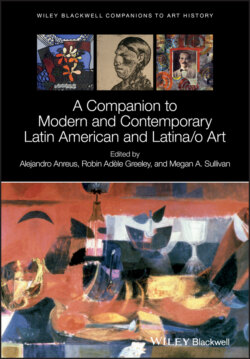Читать книгу A Companion to Modern and Contemporary Latin American and Latina/o Art - Группа авторов - Страница 21
1.2 Mural Painting
ОглавлениеThe three major mural painters of this period are Diego Rivera (1886–1957), José Clemente Orozco (1883–1949), and David Alfaro Siqueiros (1896–1974). The scope of this chapter allows attention only to these three who so dominated the artmaking of their time that they are commonly referred to as Los tres grandes, The Big Three (Anreus et al. 2012).
Before considering the artists and their works, it would be useful to introduce the concept of a mural painting. A mural painting is a large painting that is permanently attached to a wall. It is not a large canvas painting that is produced in the studio and then put onto a wall. A true mural is painted onsite and bears a strong relationship to the architecture and the function of the building or space it occupies. For instance, the murals created by Diego Rivera for the grand staircase at the National Palace in Mexico City, the headquarters of the government, address the political leadership of the nation and also, in their composition, the shape of the walls and the fact that the walls encase a stairway.
With the Mexican government as patron of many of these murals, they are no one person's private property but rather belong to the nation and to each of its citizens equally. Publicly owned images were to give a sense of empowerment to a citizenry badly in need of such after so many years of laboring under the Díaz dictatorship and after a decade of frustrated and dashed hopes since the Revolution of 1910. In 1920, it was felt that the government would finally lead its people to an attainment of the goals of the revolution. The mural paintings were expected to play a major role in convincing the Mexican nation of the virtues of this process. As one writer claimed, “It is natural that the State should be a partisan of an artistic form that would be useful for its political ends” (Cardoza y Aragón 1940, p. 18).
